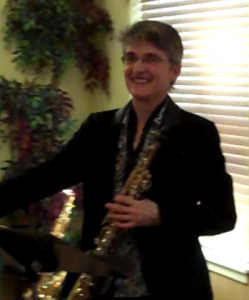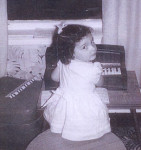Saxophone & Clarinet Lessons 503.888.5796
How to Give a Practice Performance and Stop Stage Fright


How to Give a Practice Performance and Stop Stage Fright
It’s time again for the Spring recital performance.
My students have been practicing their solos and ensemble pieces. They have been practicing scales and long tones; their foundational skills. And they have been taking regular lessons with me. All this to prepare for the Spring Recital; this year entitled, Simple Gifts.
Performance Jitters
Many students get nervous before a recital. Nervousness can take many forms. Some people experience the rapid pulse, clammy hands and dry mouth. Other people will get agitated or jumpy. Still others will feel a blind panic. “I don’t remember how to play!”
I’ve experienced it all. And the good news is that you can do something to address your stage fright.

Giving a practice performance is just one way to address your stage fright. And contained within the practice performance are many suggestions of how to explore your nervousness and find solutions that work for you.
So, this week I’ve added one more thing for everyone to practice: the performance.
I’ve instructed each student to give a practice performance for their family.
How To Give A Practice Performance and Stop Stage Fright
1. Set The Stage
Clear a space in the living room, some place where parents, children, spouse, siblings can all gather comfortably.
Put your music stand in the front of the room facing where your audience will sit.
Set your music on the stand. Be sure to gather all the music you are playing and only that music. No need to clutter up the stand with other music!
2. Order Your Music
Decide on an order of music and put your music in that order.
3. Set A Date and Time

Choose a day and time when everyone is available. After dinner on a weekend may work well. Perhaps you’ll choose a time after school or before bed. You’ll know what is best for your family.
Let everyone know that you’ll be giving a short concert at your chosen time and day.
4. Warm-up For Your Performance
About 15 minutes before your show, warm up your instrument and your fingers.
Play long tones. Play scales slowly and quickly. Blow warm air through your instrument. Play 2-3 measure selections of your solo and ensemble pieces.
Try not to play the complete song all the way through. This is not a practice session. You are just warming up.
If you practice meditation, sit for 10 minutes before you warm up.
5. Give Your Performance
Let Your audience know ‘the house is open’ and they can take their seats.
Once everyone is seated, enter the room with your instrument. Remember, your stand and music is already set on stage.
- Come to center stage and bow to your audience.
Optional: Introduce the music you are about to play. Sometimes saying a few words can help you relax. - This is a good time to exhale slowly. The in breath will take care of itself. 😉
- Step over to your music stand. Is it set at a good height for you to see your music comfortably? If not, set it now.
- Look at your music. In your mind, sing or play a few measures from the middle of the song. Very often, the middle of a solo has a challenging fingering or unusual rhythm and it helps to hear that before you start. It will remind you of your tempo so you don’t play too slow or too fast.
- Do another slow exhalation.
- Count silently to yourself at tempo for one or two measures.
Play!
Once you start playing, keep playing to the end of your music. All the prep you just did is so important. It helps you get present and give your best performance.
When you are playing, place your complete attention on the music. In this way, there is no one else in the room. It’s just you and your music.
6. Mistakes Happen
Mistakes happen to all of us. It’s a natural part of performing.
Let them go and bring your focus back to the present; back to the music you are playing in this moment.
Giving a practice performance is one of the best ways I know to prepare for an upcoming show. It helps you prepare on many levels: musically, mentally, emotionally, and physically.
At the end of each piece, take a bow. Pause. Look at your audience. Then bend at the waist and look at your feet for a slow count of two. Come back up for a slow count of two.
A bow says ‘thank you for listening. Thank you for coming.’
7. What Did You Learn?
After your practice performance, take a few moments to answer these questions.
- How do I feel?
- What is my favorite part of the performance?
- Is there a spot in my music that needs some practice? If so, make a note of it.
- If I was nervous at the start, how did that feeling change over the course of my playing?
- What do I want to do differently for my next performance?
- What do I want to be sure and do the same for my next performance?
There you have it. A step-by-step guide to giving a practice performance and reducing if not stopping stage fright.
I’d love to hear how your practice performance goes. Tell me what you learned in the comments below.




